2. Ministry of Marine Affairs and Fisheries (KKP). Fish consumption rate. Jakarta: KKP;2020. cited 2021 July 17. Available from:
https://akikkp.org/kkpindonesia/.
4. Weiser MJ, Butt CM, Mohajeri MH. Docosahexaenoic acid and cognition throughout the lifespan. Nutrients. 2016; 8:99. PMID:
26901223.

5. Lauritzen L, Hansen HS, Jørgensen MH, Michaelsen KF. The essentiality of long chain n-3 fatty acids in relation to development and function of the brain and retina. Prog Lipid Res. 2001; 40:1–94. PMID:
11137568.

6. Carver JD, Benford VJ, Han B, Cantor AB. The relationship between age and the fatty acid composition of cerebral cortex and erythrocytes in human subjects. Brain Res Bull. 2001; 56:79–85. PMID:
11704343.

7. Doidge N. The Brain That Changes Itself. New York (NY): Viking Press;2007.
8. Rahmawaty S, Meyer BJ. Stunting is a recognized problem: evidence for the potential benefits of ω-3 long-chain polyunsaturated fatty acids. Nutrition. 2020; 73:110564. PMID:
32078914.

9. Nichols PD, Petrie J, Singh S. Long-chain omega-3 oils-an update on sustainable sources. Nutrients. 2010; 2:572–585. PMID:
22254042.

10. Leek S, Muddock S, Foxall G. Situational determinants of fish consumption. Br Food J. 2000; 102:18–39.

11. Prell H, Berg C, Jonsson L. Why don't adolescents eat fish? Factors influencing fish consumption in school. Food Nutr Res. 2002; 46:184–191.

12. Ferit CM, Günlü A, Yeşim CY. Fish consumption preferences and factors influencing it. Food Sci Technol (Campinas). 2015; 35:339–346.
13. Rahmawaty S, Meyer BJ. Development and validation of a cultural-based food frequency questionnaire (FFQ) against 7-day food diary (7d FD) to access fish intake among elementary school children. Curr Res Nutr Food Sci. 2021; 9.
14. Rahmawaty S, Charlton K, Lyons-Wall P, Meyer BJ. Factor that influence consumption of fish and omega-3 enriched food: a survey of Australian families with young children. Nutr Diet. 2013; 70:286–293.
15. Dalton A, Wolmarans P, Witthuhn RC, van Stuijvenberg ME, Swanevelder SA, Smuts CM. A randomised control trial in schoolchildren showed improvement in cognitive function after consuming a bread spread, containing fish flour from a marine source. Prostaglandins Leukot Essent Fatty Acids. 2009; 80:143–149. PMID:
19201180.

16. Saraf RA, Balamurugan J. The role of mass media in health care development: a review article. J Adv Res Journal Mass Commun. 2018; 5:39–43.
17. Ariño A, Beltrán JA, Herrera A, et al. Fish and seafood: nutritional value. Caballero B, editor. Encyclopedia of Human Nutrition. Third Edition. Cambridge (MA): Academic Press;2013. p. 254–261.
18. Poernomo D, Suseno SH, Wijatmoko A. Utilization of vinegar, lime (Citrus aurantifolia) and starfruit (Averrhoa bilimbi) to reduce the fishy smell of Layang fish paste (Decapterus spp.). J Pengolah Has Perikan Indones. 2004; 7:11–18.
19. Haryati S, Munandar A. Application of Zero Waste Concept on Milkfish Shredded Meat Processing. Fish Mar J. 2012; 2:127–130.

20. Uju , Nitibaskara R, Ibrahim B. The effect of washing frequency of Surimi on the quality of Jangilus fish ball (Istiophorus sp.). J Pengolah Has Perikan Indones. 2004; 7:1–10.
21. Hafiluddin H, Perwitasari Y, Budiarto S. Analysis of nutritional contents and mud odor of milkfish (Chanos chanos) from two different locations. J Kelaut. 2014; 7:33–44.
23. Sam A, Bi X, House L. Identifying the Attitudes and Preferences of Parents and Children for Seafood: Summary of Focus Group Results. Gainesville (FL): UF/IFAS Extension;2016.
24. Dias NAA, Lara SB, Miranda LS, Pires ISC, Pires CV, Halboth NV. Influence of color on acceptance and identification of flavor of foods by adults. Food Sci Technol. 2012; 32:296–301.
25. Boateng GO, Neilands TB, Frongillo EA, Melgar-Quiñonez HR, Young SL. Best practice for developing and validating scale for health, social, and behavioral research: a primer. Front Public Health. 2018; 6:149. PMID:
29942800.

26. Nursalam. Concept and Application of Nursing Research Methodology. Jakarta: Salemba Medika;2008.
29. Subar AF, Dodd KW, Guenther PM, Kipnis V, Midthune D, McDowell M, Tooze JA, Freedman LS, Krebs-Smith SM. The food propensity questionnaire: concept, development, and validation for use as a covariate in a model to estimate usual food intake. J Am Diet Assoc. 2006; 106:1556–1563. PMID:
17000188.

30. Rahmawaty S, Charlton K, Lyons-Wall P, Meyer BJ. Development and validation of a food frequency questionnaire to assess omega-3 long chain polyunsaturated fatty acid intake in Australian children aged 9-13 years. J Hum Nutr Diet. 2017; 30:429–438. PMID:
28009068.

31. Gladyshev MI, Sushchik NN, Gubanenko GA, Demirchieva S, Kalachova G. Effect of way of cooking on content of essential polyunsaturated fatty acids in muscle tissue of humpback salmon (Oncorhynchus gorbuscha). Food Chem. 2006; 96:446–451.
32. Candela M, Astiasarán I, Bello J. Deep-fat frying modifies high-fat fish lipid fraction. J Agric Food Chem. 1998; 46:2793–2796.

33. Candela M, Astiasarán I, Bello J. Effects of frying and warm holding on fatty acids and cholesterol of sole (Solea solea), codfish (Gadus morrhua) and hake (Merluccius merluccius). Food Chem. 1997; 58:227–231.
34. Skinner JD, Carruth BR, Wendy B, Ziegler PJ. Children's food preferences: a longitudinal analysis. J Am Diet Assoc. 2002; 102:1638–1647. PMID:
12449287.
35. Kral TV, Rauh EM. Eating behaviors of children in the context of their family environment. Physiol Behav. 2010; 100:567–573. PMID:
20457172.

36. Savage JS, Fisher JO, Birch LL. Parental influence on eating behavior: conception to adolescence. J Law Med Ethics. 2007; 35:22–34. PMID:
17341215.

37. Imm P, Knobeloch L, Anderson HA. Maternal recall of children's consumption of commercial and sport-caught fish: findings from a multi-state study. Environ Res. 2007; 103:198–204. PMID:
16828736.

38. Gillman MW, Rifas-Shiman SL, Frazier AL, Rockett HR, Camargo CA Jr, Field AE, Berkey CS, Colditz GA. Family dinner and diet quality among older children and adolescents. Arch Fam Med. 2000; 9:235–240. PMID:
10728109.
39. Verbeke W, Vackier I. Individual determinants of fish consumption: application of the theory of planned behaviour. Appetite. 2005; 44:67–82. PMID:
15604034.

40. Ollis TE, Meyer BJ, Howe PR. Australian food sources and intakes of omega-6 and omega-3 polyunsaturated fatty acids. Ann Nutr Metab. 1999; 43:346–355. PMID:
10725768.

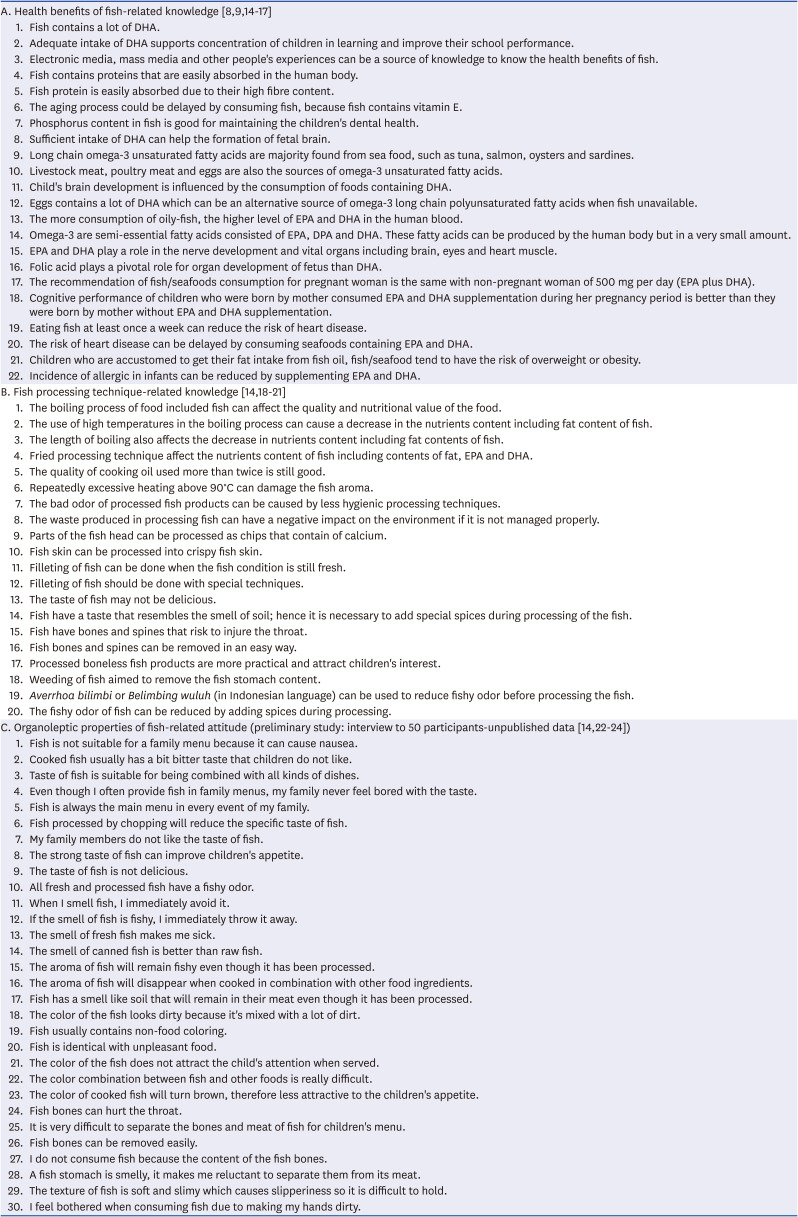
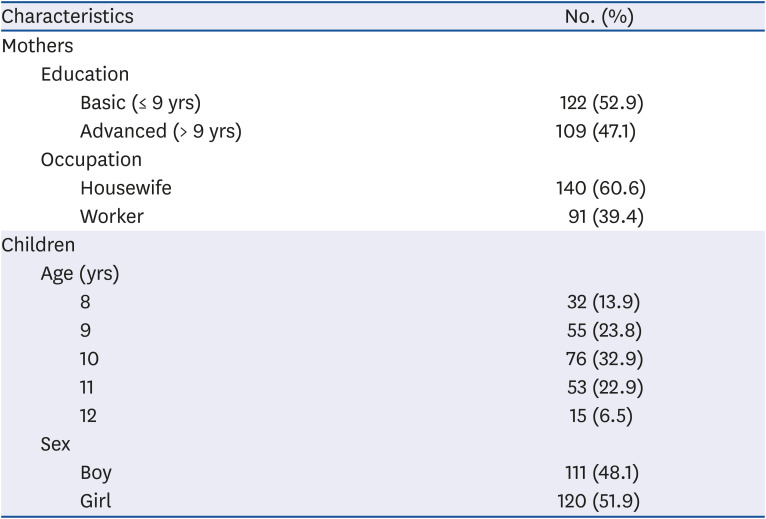
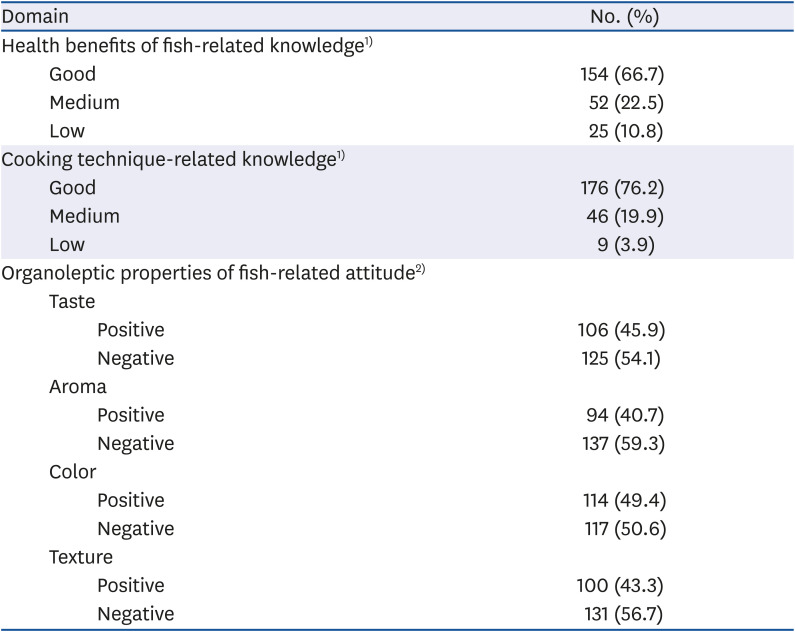
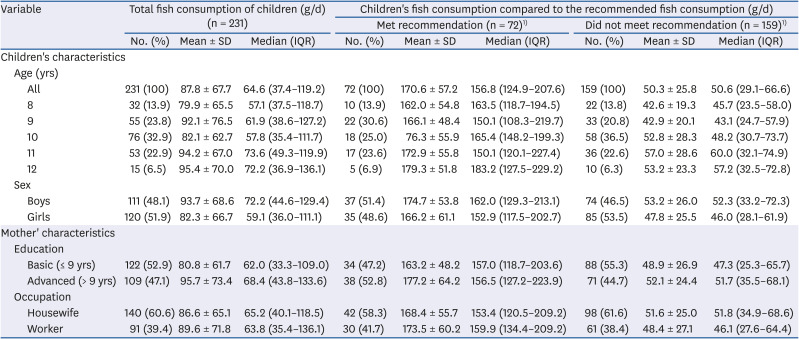
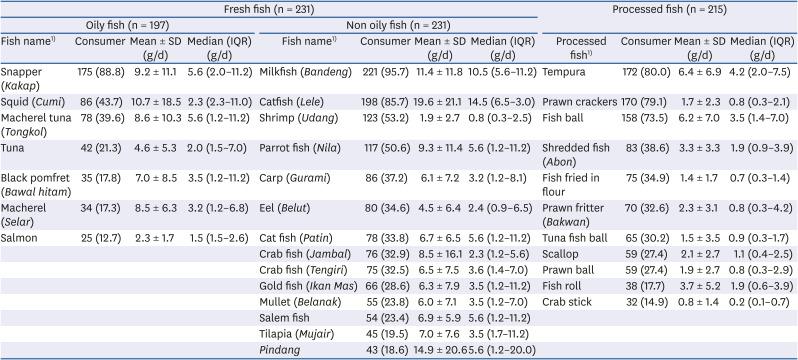
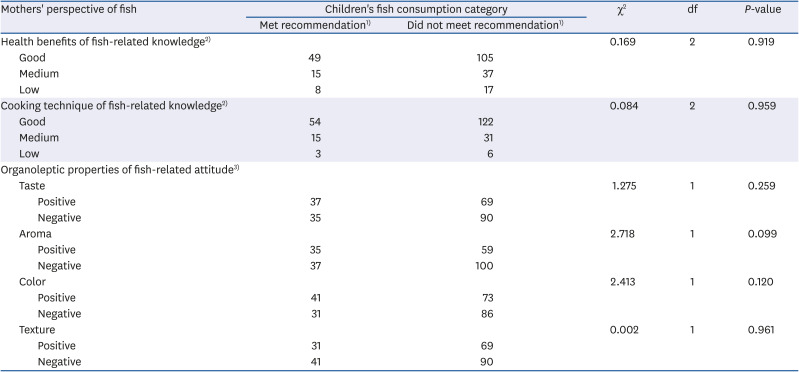




 PDF
PDF Citation
Citation Print
Print



 XML Download
XML Download